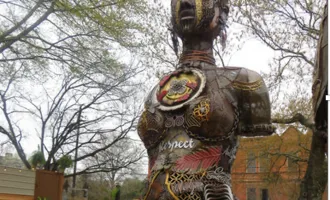
Photo by Louis Galvez on Unsplash
This Date in UCSF History: Prof Claims Rape Stats Inflated, Gets Pushback
Originally published in Synapse on October 10, 1991.
Fifty people gathered in Toland Hall on Oct. 3 to hear Jennifer Kanenaga, outreach coordinator for San Francisco Women Against Rape, critique the work of UC Berkeley Professor Neil Gilbert.
Gilbert’s article, “The Phantom Epidemic of Sexual Assault,” which appeared in the Spring 1991 issue of a journal called The Public Interest, claimed that the media and “radical feminists” exaggerate the extent to which rape occurs in America.
Kanenaga believes it is indicative of a “growing backlash against feminism,” and sees Gilbert’s work as an attack on programs such as hers, which attempt to teach children and teenagers how to protect themselves against sexual assault.
Kanenaga outlined Gilbert’s argument and criticized both his use of statistics and his definition of what constitutes sexual assault. Gilbert tried to refute data from four recent studies indicating that as many as one in two women will experience some kind of unwanted sexual advance by age 21.
These studies were based on direct interviews with college students and other groups of young women. Gilbert contends that few of these episodes actually constitute rape and instead uses FBI statistics to estimate the magnitude of the problem of sexual assault. After making some correction for assumed underreporting, he asserts that one in 1,000 women are raped in a given year.
Gilbert argues that the discrepancies in the data are due largely to a difference in the definition of what constitutes sexual assault. Instead of simply asking respondents whether they had ever been raped, the four studies cited by Gilbert provided a series of possible choices with each question. For example, “Have you had sexual intercourse when you didn’t want to because you were overwhelmed by a man’s continual arguments and pressure? Because a man gave you alcohol or drugs? Because a man threatened or used some degree of physical force to compel you?”
The answers were then used to determine whether the event met the legal definition of sexual assault.
Gilbert argues that asking these questions results in an exaggeration of the problem. He contended that verbal pressures such as, “if you really loved me, you’d do it,” “we did it last night,” and “you will like it,” fall under “the kaleidoscope of intimate discourse,” rather than coercion. In addition, he maintains, “it makes a difference what the man’s intention was, how much alcohol the woman had ingested, and whether and how she expressed her lack of consent.”
Kanenaga finds these statements dangerous because they hold a woman responsible for actively resisting, yet they allow a man to ignore a woman’s objections as long as he does not “intend” to rape her.
California law slates, “The essential guilt of rape consists in the outrage to the person and feelings of the victim of rape.” (Section 263)
According to Kanenaga, asking women about whether they have had specific experiences leads to a more accurate assessment of the prevalence of sexual assault because many women believe “the myth that a man must force them to have sex at gunpoint for it to count as rape.
She attributes this to living in a society in which “sexism teaches men and women that rape is acceptable behavior” and that many popular images portray a woman’s “no” as meaning “yes.”
Lack of mutual consent is central to rape law. Gilbert’s arguments suggest that consent to ingest alcohol also implies consent to have sex, but Kanenaga pointed out that California law explicitly says that someone incapacitated by alcohol is incapable of giving consent.
Thus, having sex with someone who does not want to and is too drunk to resist is legally considered rape.
Finally, Kanenaga charges that Gilbert’s use of statistics is misleading. His figure of one in 1,000 estimates incidence or rapes in one year, while the other studies discuss prevalence, or assaults experienced over a person’s lifetime. In addition, she takes issue with his interpretation of FBI statistics.
The agency itself estimates that only one in 10 rapes is ever reported, and that one in three girls will be sexually assaulted by the age of 18. The high rate of date rape on college campuses, where most women are over 18, would also raise that number. Thus, the FBI’s statistics do not diverge from those reported in the four studies by nearly as much as Gilbert claims.
UC Berkeley students attending the talk agreed that Gilbert’s figures were misleading and pointed out that articles in The Public Interest are not subject to peer review standards.
Although it would be impossible to ascertain the exact incidence or prevalence of sexual assault in this country, it is clear to Kanenaga that far more than one in 1,000 women each year are affected. She says she is “hopeful that we can change” the current climate which is so permissive towards sexual violence.
Her work in the San Francisco schools aims to teach kids to “know yourself and your limits, to trust your instincts,” and to communicate their wishes effectively.
At UC Berkeley a new group called Students Organized Against Rape is challenging Gilbert’s line. They are currently concerned with an incident involving Diana Russell, author of one of the studies Gilbert disputes.
Russell was asked in August by the UC Berkeley School of Social Welfare to give the prestigious Seabury Lecture but was subsequently told not to discuss her research and Gilbert’s attack on it. When she refused to accept the constraints, her invitation to speak was retracted by Paul Terrell, Associate Dean of the UCB School of Social Welfare.



